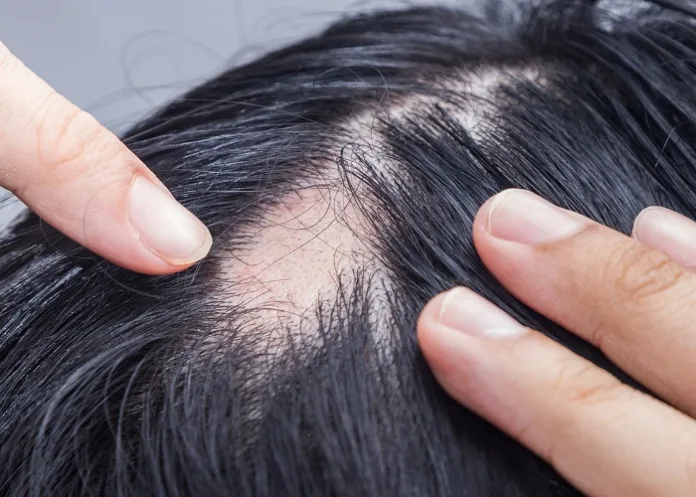A large study involving more than half a million people in South Korea suggests that the incidence of alopecia areata significantly increased after Covid-19.
In a propensity score-matched analysis, incidence of the autoimmune form of hair loss was 82% higher for individuals with versus those without a prior Covid infection (43.19 vs 23.61 per 10 000 person-years; adjusted HR 1.82, 95% CI 1.60-2.07), reported Jin Park, MD, PhD, of Jeonbuk National University Medical School in Jeonju, South Korea, and colleagues in a JAMA Dermatology research letter.
Higher incidence was seen in all groups older than 20, with a greater risk observed both in women and men, they said.
MedPage Today reports that the study also revealed an increased incidence of telogen effluvium – rapid hair loss triggered by stress or other changes to the body – among the cohort with Covid compared with the control group (adjusted HR 6.40, 95% CI 4.92-8.33).
“These findings support the possible role of Covid-19 in AA (alopecia areata) occurrence and exacerbation, although other environmental factors, like psychological stress, may have also contributed during the pandemic,” the scientists said.
“Plausible mechanisms of AA after Covid-19 include antigenic molecular mimicry between SARS-CoV-2 and hair follicle auto-antigens, cytokine shifting, and bystander activation.”
The team said alopecia areata occurs in susceptible individuals by environmental triggers, such as viruses, vaccinations, and psychological stress, and that while reports of documented new onset, exacerbation and recurrence of the condition after Covid have been increasing, evidence linking it to the virus had been limited.
For their propensity score-matched study, the authors used data from the Korea Disease Control and Prevention Agency-Covid-19 National Health Insurance Service cohort from October 2020 to September 2021. The cohort included 259 369 patients with Covid and 259 369 patients without it. Patients were matched along demographic characteristics and comorbidities.
Looking at clinical subtypes, incidences of patchy alopecia areata or alopecia totalis and alopecia universalis (AT/AU) were higher in patients with Covid, at 35.94 and 7.24 per 10 000 person-years, respectively, compared with 19.43 and 4.18 per 10 000 person-years among controls.
Meanwhile, the prevalence of alopecia areata and AT/AU was 70.53 and 12.39 per 10 000 person-years in the Covid group versus 52.37 and 8.97 per 10 000 person-years in controls.
“During the study period, the age- and sex-adjusted incidence and prevalence of AA and AT/AU in Covid-19-infected patients were considerably higher than in the pre-pandemic period in Korea, in which incidence and prevalence of AA and AT/AU remained constant from 2006 to 2015,” they wrote.
Park and team acknowledged “potential detection or misclassification bias” in their study, despite using validated sensitivity analyses with several matching variables. “Further studies are necessary to validate the association between different populations and elucidate the causal relationship between the two conditions.”
Shoshana Marmon, MD, PhD, of New York Medical College in New York City, told MedPage Today that while the “plausible mechanisms” described by Park and his team are “theoretically sound, their specific roles in the context of Covid-19 and alopecia areata require further empirical validation through research and clinical studies”.
MedPage Today article – Alopecia on the Rise After COVID, Study Suggests (Open access)
JAMA Network article – Risk of Alopecia Areata After COVID-19 (Open access)
See more from MedicalBrief archives:
Covid symptoms linger two years later in 33% of cases
50+ long-term effects of COVID-19 – Systematic review and meta-analysis
Greenlight for alopecia drug after trial results

